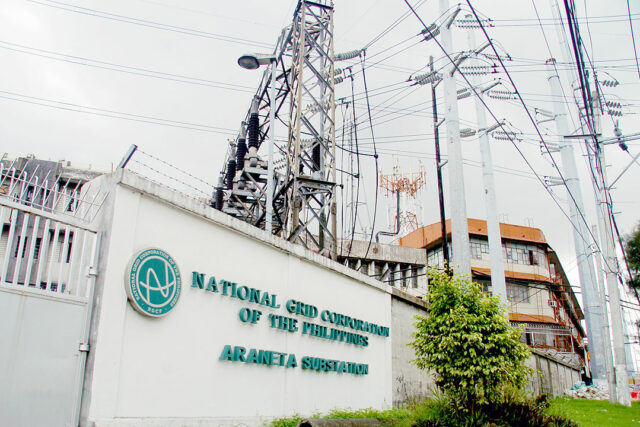A McKinsey report on global banking in 2023 has an important revelation. “One aspect of banking hasn’t changed: the price-to-book (P/B) ratio, which was at 0.9 in 2022. This measure has remained flat since the 2008 financial crisis,” it said. The price-to-book ratio reflects some of the long-term systemic challenges the sector is facing.
In the Philippine banking sector, only a handful of banks breach the P/B level of 1.0. So, are the banks’ shares worth less than liquidation value? The market may be of the opinion that the return on equity of the banks could be less than the cost of equity, and the assets are worth less than current balance sheet values. There is an upside, though. Once market sentiment improves, a slight improvement in the P/B ratio would cause major price appreciation for bank stocks.
The outlook for banks relies a lot on global trends that are continually changing. Primarily, higher interest rates and inflation figures are observed. Technological progress continues to accelerate with digital and technology-driven consumer demands and the emergence of generative artificial intelligence. One must also factor in rising geopolitical tensions that increase volatility and impose constraints on the real economy.
The stress and risk from macroeconomics, technology and geopolitical drivers are forcing governments to broaden and deepen their regulatory scrutiny of the banking sector. Higher capitalization requirements for banks and increasing regulatory costs are anticipated.
While outsiders view banking ownership as glamorous and lucrative, these trends highlight how banking remains a challenging industry. I remember Philippine Business Bank, Inc. Chairman Emeritus Alfredo Yao discussing the straightforward nature of product transformation in the manufacturing sector, where raw materials are converted into a product to satisfy a consumer need. In contrast, banking is making money out of money, and it requires a totally different discipline. It is in the resource transformation business, which demands astute management of uncertainty. The business of banking involves taking risks in various forms — credit, treasury, fund transfers, operations and distribution.
We focus on one major challenge and cost driver: the expenses that banks incur to adhere to legal, regulatory and supervisory requirements set by the Bangko Sentral ng Pilipinas (BSP) and other relevant authorities. These costs include investments in technology, personnel, training, reporting, audits and other expenses to meet regulatory standards.
Investments in technology and systems upgrades vary depending on a bank’s size and complexity of operations, but generally range from millions to hundreds of millions for the medium-sized to large banks. Banks need to invest in advanced technology and software for regulatory reporting, transaction monitoring, data privacy, cybersecurity, anti-money laundering/counter-terrorist financing (AML/CTF), and risk management. Banks may also need to upgrade core banking systems to meet new regulatory standards, such as those for digital banking and financial inclusion.
Salaries for qualified compliance officers, legal experts, auditors, and risk managers can also be substantial. Ongoing training programs for employees to keep them updated on new regulations, compliance procedures, and risk management practices are also mandatory.
Regular internal audits, compliance checks, and monitoring programs ensure adherence to regulations. Internal audit and monitoring costs can be large, especially for big banks with expansive operations. Aside from employing internal audit teams, hiring third-party auditors or using specialized compliance software are often done.
Reporting and documentation requirements can be labor-intensive and require sophisticated data management systems. The reports include financial statements, risk assessments, stress test results, AML/CTF reports, consumer protection compliance, and other disclosures.
Banks also need to engage external legal advisors and consultants to interpret new regulations, provide guidance on compliance strategies, and assist with regulatory filings. Then, there are penalties and remediation costs. These are costs incurred from non-compliance, such as fines, penalties, legal costs, and remediation expenses (e.g., strengthening controls, compensating affected customers). These costs are difficult to predict but can be substantial if the bank faces regulatory breaches.
Finally, compliance requirements may limit a bank’s ability to engage in certain profitable activities, delay product launches, or require additional capital reserves, which could have been used for business growth. Opportunity costs are less tangible but can impact the bank’s overall profitability and competitive position.
All of these costs are needed to comply with key regulatory requirements. The following are the major ones: AML/CTF; data privacy and cybersecurity; Basel III requirements; consumer protection regulations; stress testing and risk management mandates of the BSP; corporate governance standards (including establishment of board committees); and digital banking and financial technology regulations.
Compliance costs are often viewed as high, especially for smaller banks and rural banks that may lack the economies of scale to absorb these expenses. Larger banks can spread these costs over a broader revenue base, making them more manageable. However, these costs are deemed as necessary to ensure the benefits of financial stability, consumer protection, risk mitigation, and long-term trust in the banking system. Balance is needed, though, against overly burdensome regulations that may stifle innovation, hinder sustainability, or limit growth.
Compliance is just one of the many challenges in banking. In a very competitive environment, bankers must identify and exploit their comparative advantage to generate returns that will allow better valuation by the market against book values.
The views expressed herein are his own and do not necessarily reflect the opinion of his office as well as FINEX.
Benel Dela Paz Lagua was previously EVP and chief development officer at the Development Bank of the Philippines. He is an active FINEX member and an advocate of risk-based lending for SMEs. Today, he is independent director in progressive banks and in some NGOs.














